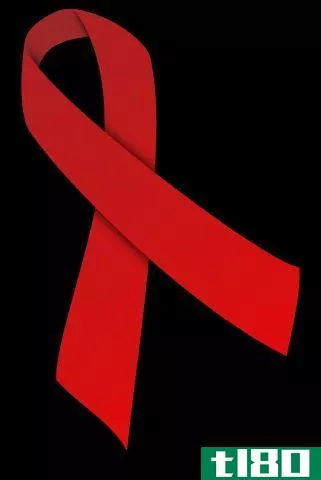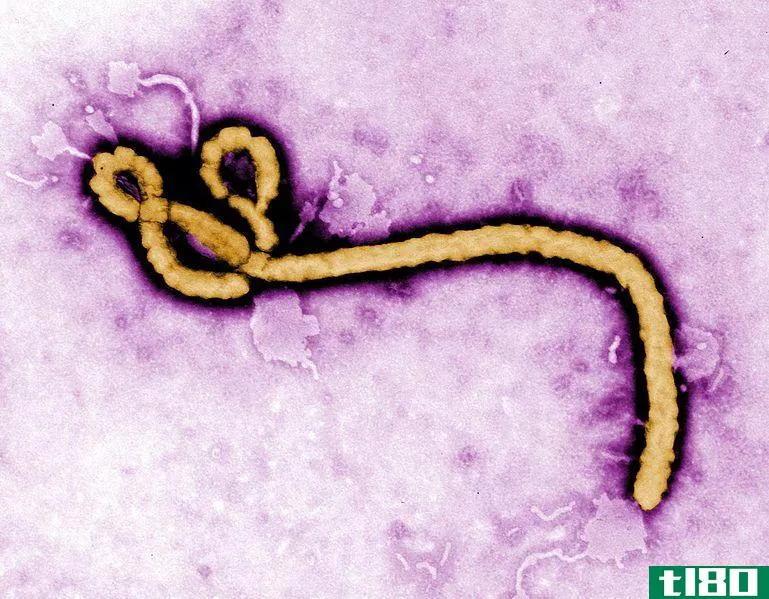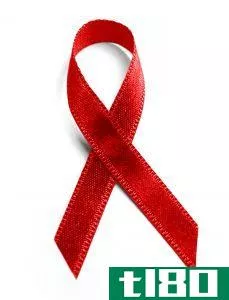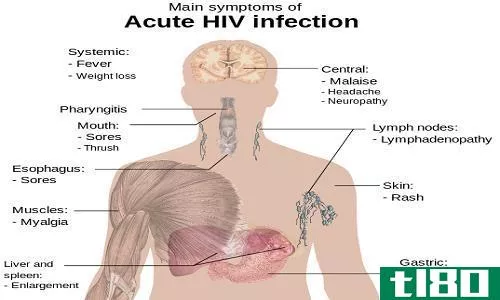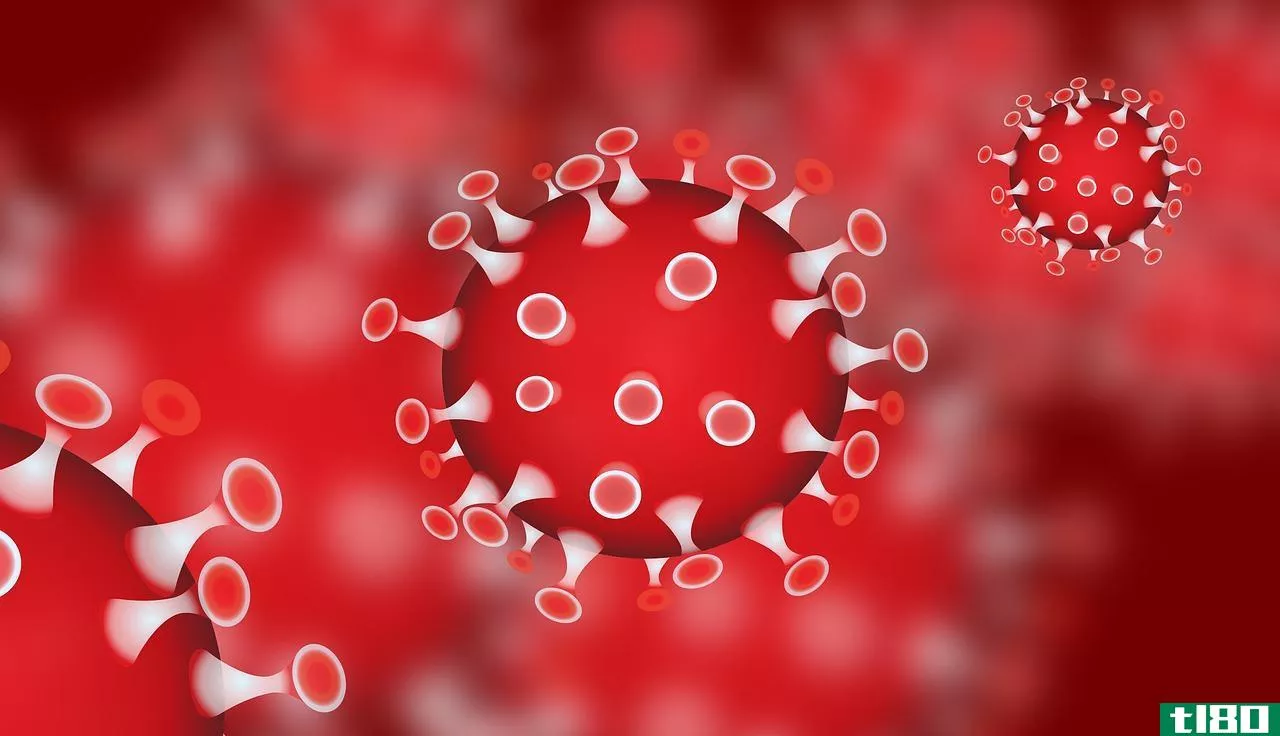埃博拉病毒(ebola)和艾滋病(aids)的区别
关键区别:艾滋病和埃博拉病毒的主要区别在于,一个感染了艾滋病病毒的人甚至可以活10年以上而不感染艾滋病。然而,感染埃博拉病毒的人将在2至21天内开始出现症状。
 埃博拉和艾滋病是两种可以攻击人类的不同疾病。埃博拉是由埃博拉病毒引起的,而获得性免疫缺陷综合症(艾滋病)是由人体免疫缺陷病毒(hiv)引起的。虽然艾滋病实际上是由艾滋病病毒引起的感染的最后阶段,但这个词通常用来指整个疾病。
埃博拉和艾滋病是两种可以攻击人类的不同疾病。埃博拉是由埃博拉病毒引起的,而获得性免疫缺陷综合症(艾滋病)是由人体免疫缺陷病毒(hiv)引起的。虽然艾滋病实际上是由艾滋病病毒引起的感染的最后阶段,但这个词通常用来指整个疾病。
The main difference AIDS and Ebola is the fact that a person that has been infected with HIV can live for more than 10 years without even getting AIDS. However, a person infected with Ebola will start to show symptoms within 2 to 21 days. Still, an Ebola patient cannot infect another person until he has started to show symptoms, whereas a person with the HIV infection can infect others even if he does not have any symptoms himself.
Another difference between Ebola and AIDS is the fact that with proper treatment, a person can prolong getting AIDS even if he is already infected with HIV, which means that a person can live a long and fairly healthy life. However, there is a 25% to 90% chance that a person with Ebola may die.
However, Ebola is fairly isolated, as compared to HIV and the number of cases affected by Ebola is much less than HIV. As of 2012, approximately 35.3 million people are living with HIV globally, whereas Ebola had 1,716 cases in 24 outbreaks until 2013. The 2014 West Africa epidemic had 13,567 reported cases of Ebola up until 29 October 2014, resulting in 4,960 deaths.
While, both can spread through the exchange of bodily fluids, such as blood, semen, breast milk, etc., Ebola can also be spread through urine, saliva, sweat, feces, and vomit, hence making it faster and easier to spread than HIV.

The symptoms of the two diseases also differ. Within two days to three weeks of contacting Ebola, the patient may show symptoms of fever, sore throat, muscle pain, and headaches. This escalates to vomiting, diarrhea and a rash, as well as impaired kidney and liver function. In some cases, patients show both internal and external bleeding, such as oozing from the gums, or blood in the stools. This eventually culminates to death between six to sixteen days of contracting the disease.
There are three main stages of HIV infection: acute infection, clinical latency and AIDS. While the first two stages of HIV include symptoms such as fever, swollen lymph nodes, inflammation of the throat, rash, muscle pain, malaise, and mouth and esophageal sores, the third and the last stage of AIDS is the worst. AIDS is characterized by low CD4+ T cell counts, lower than 200 per microliter, this allows other opportunistic infecti*** to take root and wreak havoc with the body. This also increases the chances of various viral induced cancers including Kaposi's sarcoma, Burkitt's lymphoma, primary central nervous system lymphoma and cervical cancer.
Comparison between Ebola and AIDS:
|
| 埃博拉病毒 | 艾滋病 |
| 被称为 | 埃博拉病毒病(evd)埃博拉出血热((流行性出血热) | 获得性免疫缺陷综合症(艾滋病) |
| 引起 | 埃博拉病毒科埃博拉病毒属的一种病毒:埃博拉病毒(扎伊尔埃博拉病毒)苏丹病毒(苏丹埃博拉病毒)塔伊森林病毒(塔伊森林埃博拉病毒,原名科特迪瓦埃博拉病毒)本迪布焦病毒(本迪布焦埃博拉病毒)莱斯顿病毒(莱斯顿埃博拉病毒)(仅在非人灵长类中) | 慢病毒;逆转录病毒亚群。两种主要类型的病毒:艾滋病毒1型(hiv-1和hiv-2型(艾滋病病毒(hiv-2) |
| 首次发现 | 1976年,在现在的刚果民主共和国的埃博拉河附近 | 1981年首次在美国进行临床观察。但是可以追溯到20世纪20年代的刚果民主共和国。 |
| 自然宿主 | 狐蝠科果蝠 | 艾滋病毒-1与生活在西非的黑猩猩和大猩猩身上的病毒有关,而艾滋病毒-2与生活在西非濒危灵长类动物白眉猴身上的病毒有关。 |
| 传输 | 与受感染动物的血液、分泌物、**或其他体液密切接触通过直接接触(通过破损的皮肤或粘膜)与受感染者的血液、分泌物、**或其他体液,以及与受这些体液污染的表面和材料(如被褥、衣物)进行人与人之间的传播。 | 血液、**、**液、**前或母乳的转移。在怀孕、分娩或哺乳期间从母亲传给孩子(称为垂直传播)。 |
| 潜伏期(从感染病毒到出现症状的时间间隔) | 2.至21天 | 最长10年,但可以增加治疗。 |
| 症状 | 发烧、疲劳、肌肉疼痛、头痛和喉咙痛。随后出现呕吐、腹泻、皮疹、肾功能和肝功能受损的症状,在某些情况下还出现内出血和外出血。 | 艾滋病毒感染主要有三个阶段:急**染、临床潜伏期和艾滋病。急**染:发烧,淋巴结肿大,咽喉发炎,皮疹,头痛和/或口腔和***溃疡。可能包括恶心、呕吐、腹泻、周围神经病变或格林-巴利综合征。临床潜伏期:发热、体重减轻、胃肠道问题、肌肉疼痛和淋巴结病。艾滋病:肺孢子虫肺炎,恶病质的形式,艾滋病毒消瘦综合征,食管念珠菌病,呼吸道感染。全身症状,如长期发热、出汗(尤其是在夜间)、腹泻、淋巴结肿大、发冷、虚弱和体重减轻。患卡波西肉瘤、伯基特淋巴瘤、原发性中枢神经系统淋巴瘤和宫颈癌的风险增加。 |
| 诊断 | 通过以下研究进行确认:抗体捕获酶联免疫吸附试验(酶联免疫吸附试验(elisa)抗原捕获检测试验血清中和试验逆转录聚合酶链反应(逆转录聚合酶链反应(rt-pcr)试验电子显微镜细胞培养分离病毒。 | 用酶联免疫吸附试验(酶联免疫吸附试验(elisa)检测艾滋病毒-1抗体进行确认。如果阳性,随后进行免疫印迹或免疫荧光试验(ifa)只有在两项测试都呈阳性时才被认为是艾滋病毒阳性。 |
| 治疗 | 口服或静脉补液-治疗特定症状,提高生存率。 | 治疗包括高活性抗逆转录病毒疗法(哈尔特)它可以减缓疾病的进展。治疗还包括预防和积极治疗机会**染。 |
- 发表于 2021-07-12 16:24
- 阅读 ( 270 )
- 分类:通用
你可能感兴趣的文章
艾滋病(aids)和自身免疫性疾病(autoimmune disease)的区别
关键区别——艾滋病与自身免疫性疾病 自身免疫是一种适应免疫反应,它是一种针对自身抗原的免疫反应,这种反应引起的疾病称为自身免疫性疾病。艾滋病是艾滋病病毒感染的最终阶段。如果没有适当的治疗,死亡发生在2...
- 发布于 2020-10-20 08:26
- 阅读 ( 345 )
埃博拉病毒(ebola)和马尔堡(marburg)的区别
关键区别——埃博拉与马尔堡 病毒性疾病是致命的,因为没有很多针对病毒感染的特殊药物或治疗方法。病毒感染也是一种传染性疾病,病毒通过携带者或直接接触在人与人之间传播。病毒性出血热或感染是一个集合术语,...
- 发布于 2020-10-20 12:41
- 阅读 ( 224 )
艾滋病毒(hiv)和艾滋病(aids)的区别
艾滋病毒与艾滋病 HIV and AIDS are two interrelated medical terms. The difference between HIV and AIDS is AIDS is a disease called Acquired Immune Deficiency Syndrome, which is caused by the HIV Virus (Human Immunodeficiency Virus). HIV virus destroys the cells in the human body that comb...
- 发布于 2020-11-06 17:49
- 阅读 ( 337 )
这个人刚刚以20万美元的价格卖掉了埃博拉网站
...。就在几天前,约翰逊说,“我们实际上相信我们在治疗埃博拉方面有疗效。” 不过,现在是俄罗斯公司杂草生长基金(Weed Growth Fund)接管了这一领域的所有权,目前还没有消息表明该公司对Ebola.com的计划是什...
- 发布于 2021-04-27 17:56
- 阅读 ( 103 )
艾滋病(aids)和艾滋病毒(hiv)的区别
...。HIV代表人类免疫缺陷病毒,顾名思义,它是一种病毒。艾滋病代表获得性免疫缺陷综合症,它是由于艾滋病毒感染而表现出来的疾病。有时,感染艾滋病毒的人可能会或可能不会表现出艾滋病的症状长达十年之久。 HIV通过影...
- 发布于 2021-06-22 10:43
- 阅读 ( 254 )
艾滋病(aids)和疟疾(malaria)的区别
艾滋病与疟疾 艾滋病和疟疾每年继续在全世界造成数百万人死亡。这两个被认为是最可怕的。 获得性免疫缺陷综合征是一种影响人类免疫系统的疾病。艾滋病主要由人体免疫缺陷病毒引起。另一方面,疟疾是一种由疟原虫基...
- 发布于 2021-06-23 07:37
- 阅读 ( 193 )
艾滋病(aids)和疱疹(herpes)的区别
艾滋病与疱疹 人类有免疫系统。这是一个组织系统的生物战士,抵御普通感冒和流感。当一个人感染艾滋病毒或人体免疫缺陷病毒时,这个系统会受到严重影响。因此,免疫系统不能正常工作,如果真的正常工作,那就是无效...
- 发布于 2021-06-23 07:38
- 阅读 ( 271 )
艾滋病(aids)和性病(stds)的区别
艾滋病与** 把艾滋病和*****作比较,就像找出高露洁和牙膏的区别。是的,简单地说艾滋病只是众多**中的一种。因此,艾滋病是一种**,但并非所有的**都是艾滋病。 **完全被称为*****,是指无论采取何种途径(**、**或****),都...
- 发布于 2021-06-23 07:46
- 阅读 ( 204 )
艾滋病毒/艾滋病(hiv/aids)和流感(flu)的区别
...身体的免疫细胞遭到破坏,导致获得性免疫缺陷的状况。艾滋病病毒的最初反应是流感样症状,随着疾病的发展,症状变得无症状,但会导致免疫缺陷。 艾滋病毒感染的晚期被称为艾滋病。在这种免疫缺陷的情况下,艾滋病毒...
- 发布于 2021-06-24 18:24
- 阅读 ( 340 )
冠状病毒(coronavirus)和埃博拉病毒(ebola)的区别
冠状病毒是一种引起呼吸道疾病的β-冠状病毒。埃博拉是一种引起出血热的丝状病毒。 什么是冠状病毒(coronavirus)? 定义: 冠状病毒引起呼吸道疾病,是一组被称为β-冠状病毒的病毒之一。 症状和并发症: 冠状病毒的典型...
- 发布于 2021-06-26 13:44
- 阅读 ( 201 )
